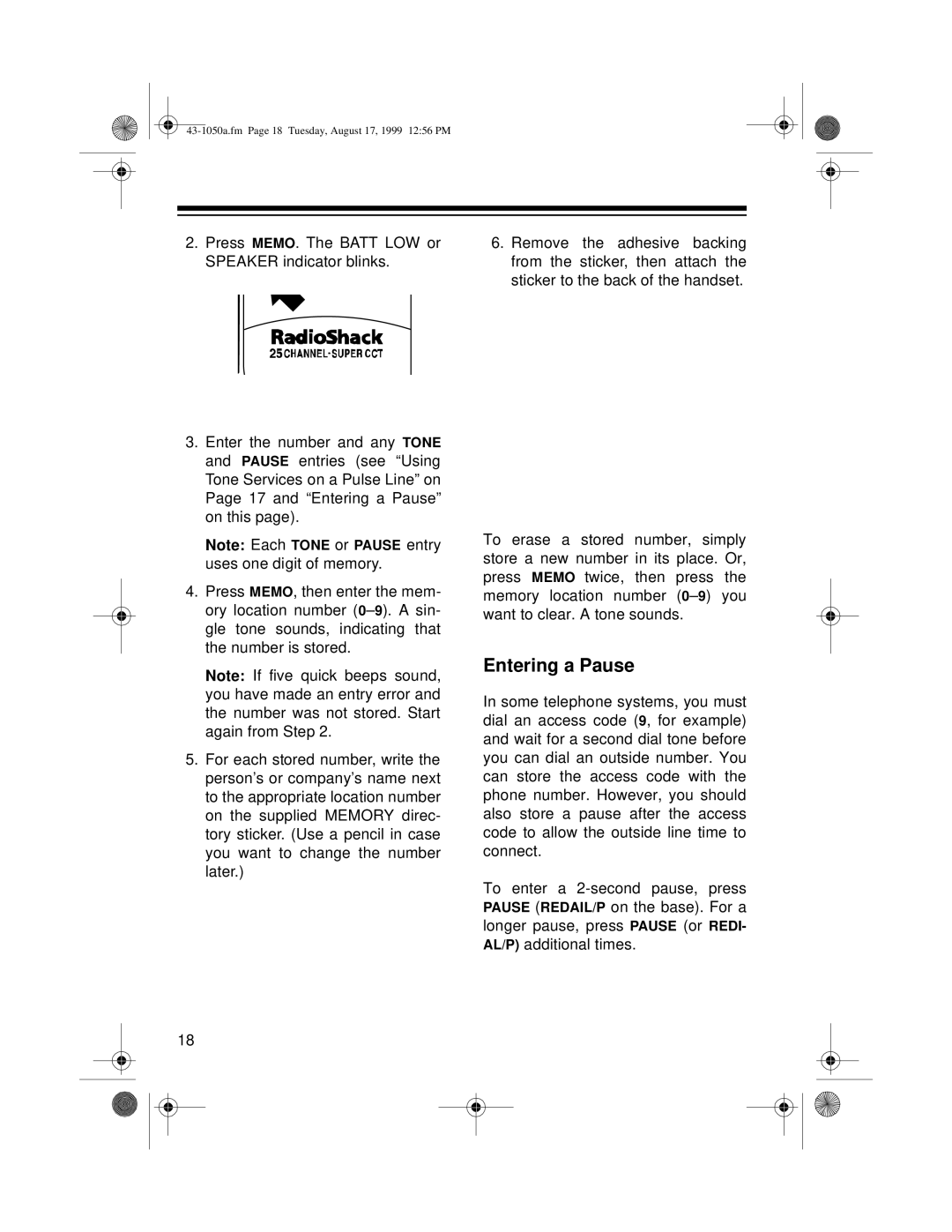ET-550 specifications
The Radio Shack ET-550 is a notable device from the well-known electronics retailer, combining simplicity and functionality for users in the late 20th century. Positioned as a reliable personal electronic device, the ET-550 attracted tech enthusiasts and casual users alike, eager to embrace the digital age.One of the main features of the ET-550 is its compact and lightweight design, making it highly portable. Users appreciated the ease with which they could carry the device, whether for personal use or during travel. The device had a user-friendly interface, ensuring that even those with limited technical knowledge could navigate through its various functions effortlessly.
The ET-550 incorporated advanced technology for its time, utilizing a clear LCD screen that displayed information prominently. This screen made it easy for users to read text and access various features without straining their eyes. The device also boasted a built-in keyboard that was comfortable to use, enabling quick data input and interaction.
Among its characteristics, the ET-550 featured a robust memory capacity, allowing users to store a plethora of notes, calculations, and data entries. This aspect made it particularly appealing to professionals and students who needed to keep track of important information on the go. Additionally, the ET-550 included a calculator function, helping users perform a variety of mathematical operations with ease, which was essential for business and academic tasks.
Another significant technology employed in the ET-550 was its power efficiency. The device was designed to consume minimal battery life, which was a key consideration for users relying on portability. With long-lasting battery performance, the ET-550 ensured that users could depend on it through extended periods without the need for frequent recharging or battery replacement.
The Radio Shack ET-550 also offered a variety of connectivity options to facilitate data sharing and device integration. Whether connecting to a computer or other peripheral devices, the ET-550 provided versatility in its applications, further enhancing its appeal.
In conclusion, the Radio Shack ET-550 stands out as a testament to innovation in personal electronics during its time. With features focused on usability, portability, and efficiency, it captured the attention of a diverse user base, marking an important chapter in the evolution of personal tech.

